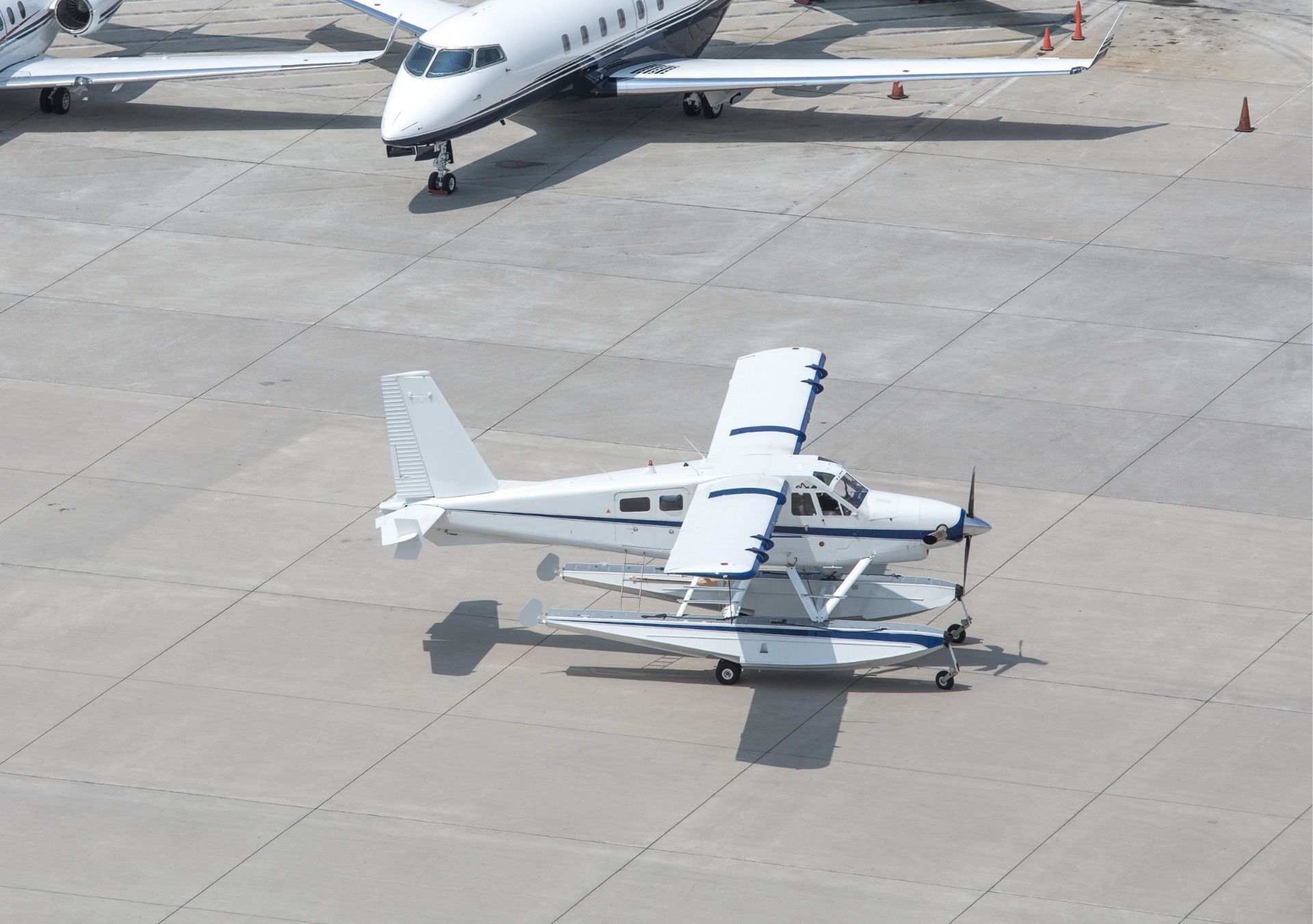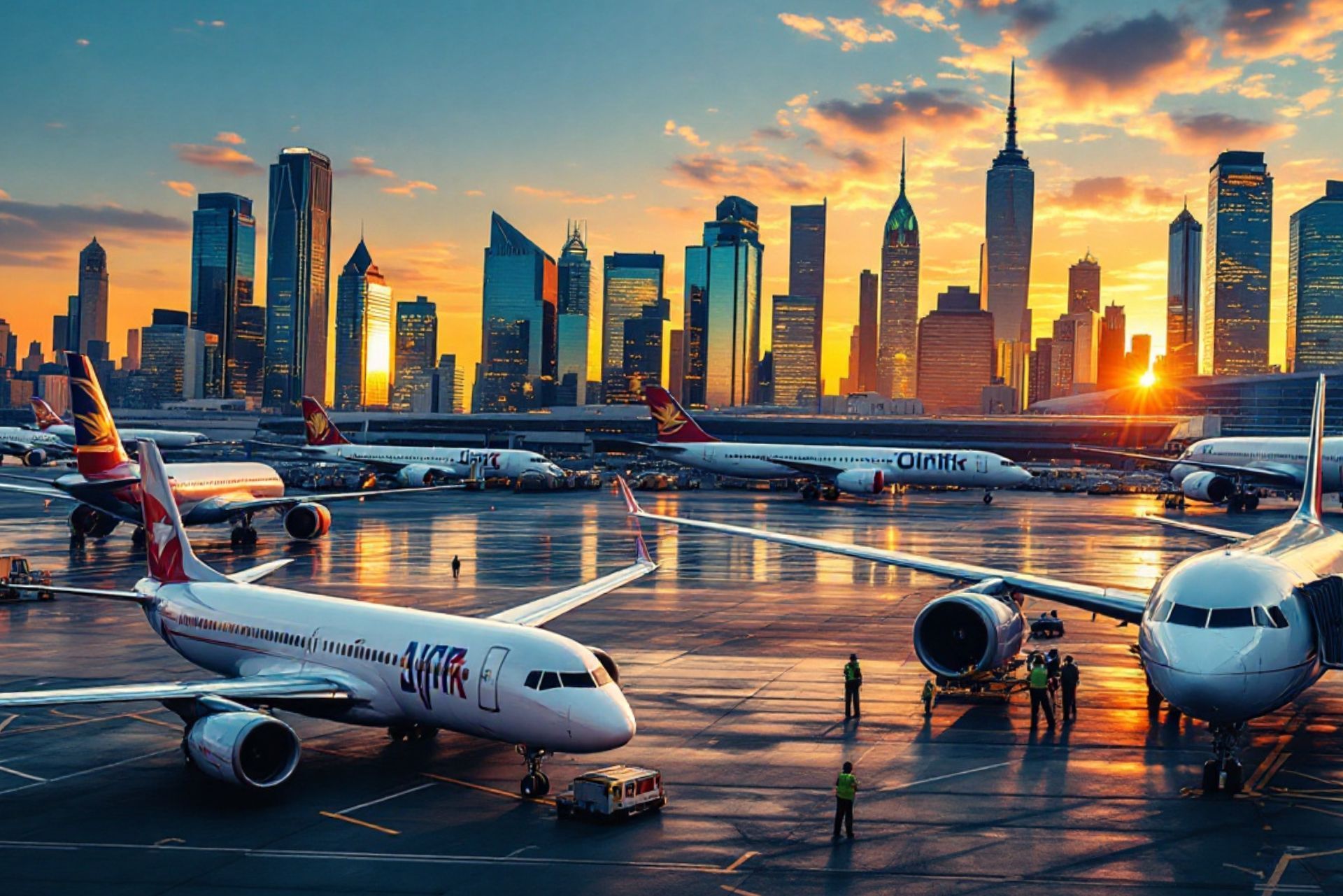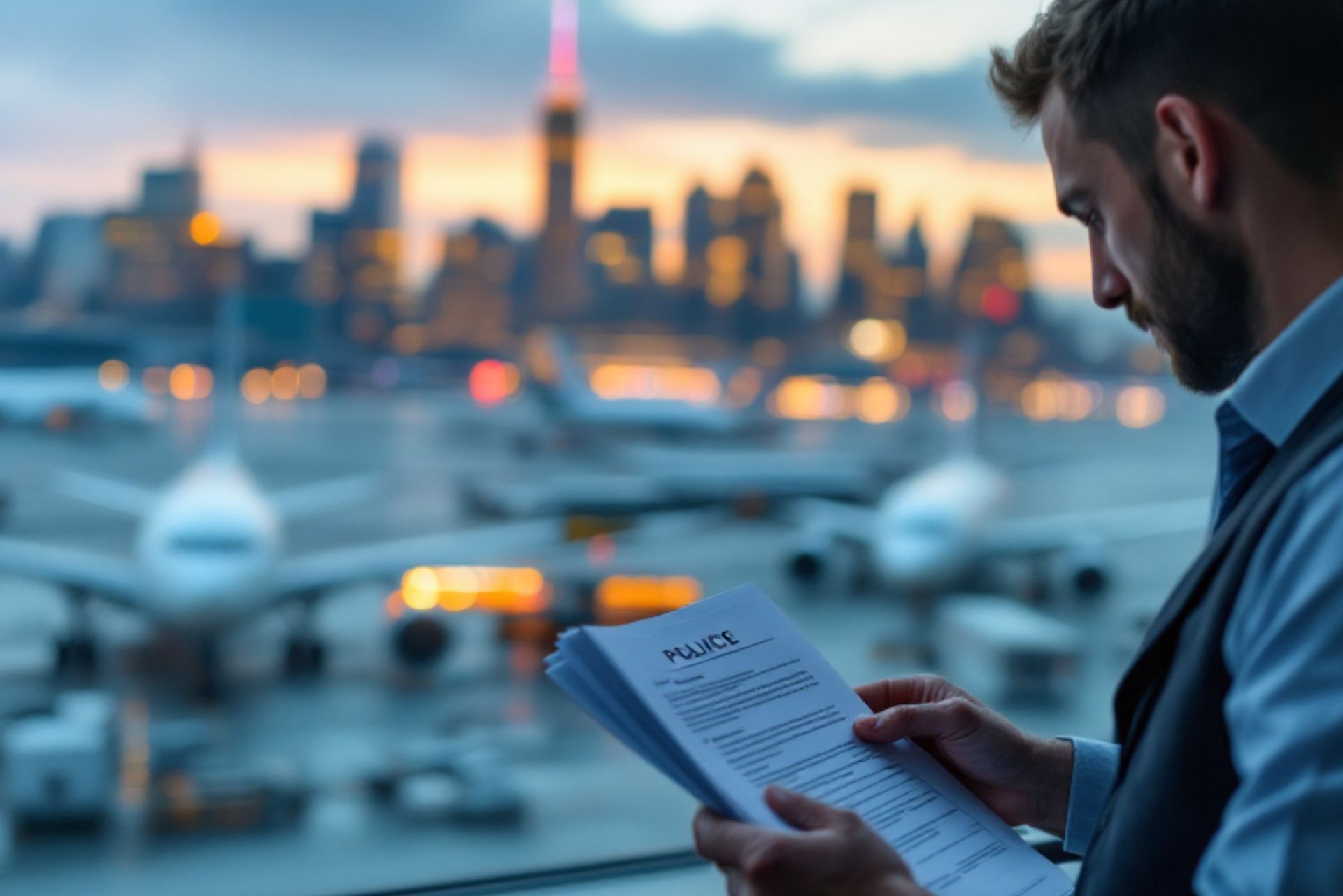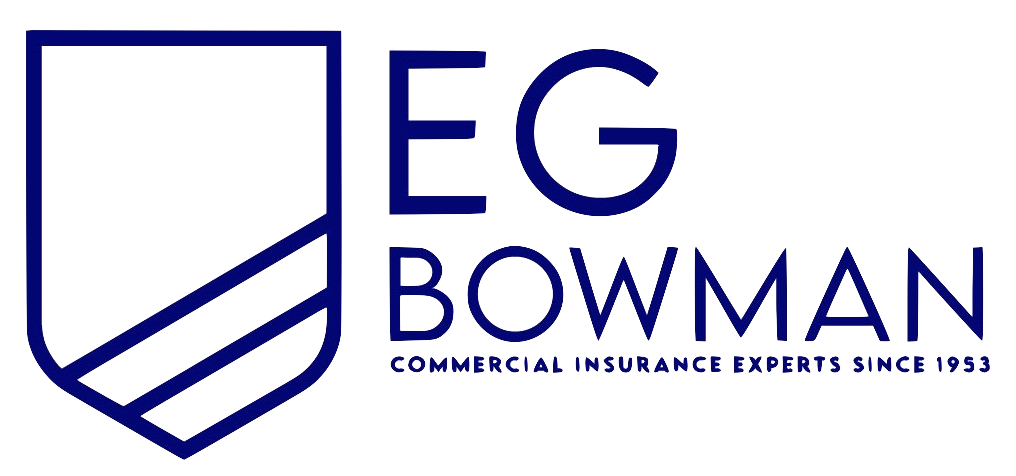
Most Common Business Policies
Index
Understanding the Basics of Aviation Insurance
Key Features of New York Aviation Insurance
The Cost of Aviation Insurance in New York
How to Choose the Right Aviation Insurance in New York
Legal Requirements for Aviation Insurance in New York
Claiming Aviation Insurance in New York
Frequently Asked Questions about New York Aviation Insurance
Contact Us
When it comes to protecting aviation operations, understanding aviation insurance is paramount, especially in a state as busy and diverse as New York. This article covers the essentials you need to know about aviation insurance, including its significance, coverage options, costs, and legal requirements.
Understanding the Basics of Aviation Insurance
Aviation insurance is a specialized type of coverage tailored specifically for the aviation industry, covering a range of aircraft, from private planes to commercial airlines. It is designed to protect aircraft owners, pilots, and passengers from various risks associated with aviation operations.
What is Aviation Insurance?
Aviation insurance encompasses a variety of policies aimed at mitigating risks related to flying and aircraft ownership. These policies typically cover physical damages to the aircraft, liability for injury to passengers, and third-party liability for property damage caused by the aircraft.
In New York, aviation insurance is increasingly vital due to the high volume of air traffic and diverse operations within the state. The coverage can be customized based on the type of aircraft, the flights conducted (private, commercial, or charter), and specific operational needs. Furthermore, aviation insurance can also include coverage for ground operations, which is essential for businesses that operate aircraft on the ground, such as maintenance and repair services, fueling operations, and hangar facilities.
Why is Aviation Insurance Important?
Aviation insurance is crucial for several reasons. First, it provides financial protection against the high costs associated with aircraft accidents, which can lead to significant expenditures for repairs, liability claims, and lawsuits.
Additionally, having adequate insurance coverage can enhance the credibility of a business, especially for commercial operators. It demonstrates a commitment to safety and regulatory compliance, making it more appealing to clients and partners. Moreover, aviation insurance can also cover specific risks such as pilot error, mechanical failure, and even acts of terrorism, which are increasingly relevant in today's world. This comprehensive protection allows operators to focus on their core business activities without the constant worry of unforeseen financial burdens that could arise from an aviation-related incident.

Key Features of New York Aviation Insurance
New York aviation insurance policies come with distinct features that policyholders need to understand. These features define the scope of coverage and the protections offered to insured parties, ensuring that both aircraft owners and operators are adequately protected against the myriad of risks associated with aviation.
Coverage Options
- Hull Coverage: This protects the aircraft itself from physical damages, including accidents that may occur on the ground or in the air. Hull coverage can also extend to cover damages caused by natural disasters, such as hurricanes or hailstorms, which are particularly relevant for aircraft owners in regions prone to severe weather.
- Liability Coverage: This includes coverage for bodily injury and property damage to third parties or passengers in the event of an accident. It is crucial for pilots and aircraft owners to ensure that their liability limits are sufficient to cover potential claims, which can be substantial in the event of a serious incident.
- Personal Injury Coverage: This protects against claims for injuries sustained by passengers during the flight. This type of coverage is especially pertinent for charter operators and commercial airlines, where the risk of passenger claims can be significant.
Other options include coverage for pilots, ground crew, and in some cases, terrorism coverage, which is becoming increasingly important in today's world. Additionally, many policies offer specialized endorsements for unique aircraft types, such as vintage planes or experimental aircraft, allowing owners to tailor their coverage to their specific needs.
Policy Limitations
Understanding the limitations of each aviation insurance policy is equally important. Most policies will have exclusions regarding specific incidents that could lead to claims. Common exclusions may include damage from war, illegal operations, and personal property storage on the aircraft. Furthermore, some policies may not cover specific types of operations, such as aerobatic flights or flight training, which could leave operators vulnerable if they engage in these activities without proper coverage.
A key limitation often involves the geographic scope of the policy. For instance, an aviation insurance policy may only cover operations within the United States, thus necessitating additional coverage for international operations. Pilots who frequently fly across borders should be aware of the varying regulations and insurance requirements in different countries, as this can impact their coverage and liability. Furthermore, understanding the nuances of each policy can help aircraft owners avoid gaps in coverage that could lead to significant financial loss in the event of an unforeseen incident.
The Cost of Aviation Insurance in New York
The cost of aviation insurance can vary dramatically based on several factors, including the type of aircraft, the experience of the pilot, and the intended use of the aircraft. Understanding these nuances can help you budget for insurance premiums more effectively. In New York, where air traffic is dense and regulations are stringent, the intricacies of aviation insurance become even more pronounced, making it essential for pilots and aircraft owners to be well-informed about their options.
Factors Influencing the Insurance Premium
- Type of Aircraft: Larger and more expensive aircraft generally come with higher insurance premiums due to increased risk.
- Flight Experience: Pilots with more flight hours and a clean safety record typically secure lower premiums.
- Usage: Commercial flights often attract higher premiums than private flights due to the increased liability involved.
Additional factors may include the geographical area of operation, claims history, and the presence of safety measures in the aircraft. Each of these components contributes to the overall cost of aviation insurance. For instance, operating in busy airspace like New York City can lead to higher premiums because of the increased likelihood of incidents. Moreover, insurers may also consider the aircraft's age and technology; newer models equipped with advanced safety features can sometimes qualify for lower rates.
Ways to Reduce Your Aviation Insurance Costs
Finding ways to lower insurance costs without sacrificing coverage is crucial. Here are some strategies to consider:
- Increase Deductibles: Opting for a higher deductible can lower your premium. However, ensure that you can afford the out-of-pocket costs in the event of a claim.
- Take Safety Training: Completing advanced safety courses or training can enhance pilot qualifications and lead to reduced premiums.
- Regular Maintenance: Keeping your aircraft well-maintained demonstrates responsibility and can attract discounts from insurers.
Additionally, joining a flying club or organization can provide access to group insurance rates, which are often more favorable than individual policies. Many clubs also offer resources for safety training and maintenance best practices, further enhancing the pilot's profile in the eyes of insurers. Furthermore, maintaining a consistent flying schedule and minimizing the number of takeoffs and landings can also play a role in reducing premiums, as insurers often look at the frequency of operations when assessing risk.
How to Choose the Right Aviation Insurance in New York
Selecting the right aviation insurance is a significant decision that can influence the overall safety and financial stability of your aviation operations. Careful consideration is required to choose a policy that best fits your needs.
Assessing Your Insurance Needs
The first step in choosing aviation insurance is to assess your specific needs. Take into account the type of flying you plan to do, whether it’s private or commercial, and consider your past flight history.
Furthermore, evaluating the value of your aircraft and any additional assets you wish to insure will help establish the necessary coverage amounts. Consulting with industry professionals can provide valuable insights during this assessment. Additionally, understanding the regulatory environment in New York is crucial, as state-specific laws and requirements can impact your insurance needs. For instance, if you operate in busy airspace or near urban centers, you may require higher liability limits to comply with local regulations and to protect against potential risks associated with densely populated areas.
Comparing Different Insurance Providers
Once you've determined your needs, it is advisable to compare multiple insurance providers. Each company may offer varied coverage options, pricing, and customer service experiences.
Reading reviews, obtaining quotes, and discussing policies with representatives can give a holistic view of which provider aligns best with your requirements. Don’t hesitate to ask specific questions regarding coverage exclusions and claim processes. It’s also beneficial to inquire about the insurer's experience with aviation claims, as a provider with a strong track record in handling aviation-related incidents can make a significant difference in your peace of mind. Furthermore, consider the financial stability of the insurance company; checking their ratings from independent agencies can help ensure that they have the resources to pay out claims when needed. Understanding the nuances of each policy, including endorsements and optional coverages, can also empower you to make a more informed decision tailored to your unique aviation profile.

Legal Requirements for Aviation Insurance in New York
New York has specific legal requirements regarding aviation insurance which must be adhered to by aircraft operators. Compliance ensures that you operate within the law and have adequate protection should an incident occur.
State Regulations for Aviation Insurance
New York mandates liability coverage for aviation operations, specifically for commercial pilots and flight operators. The minimum insurance amounts can vary depending on the type of aircraft and the nature of the operations.
It is essential for operators to remain informed about these regulations as they may change and can significantly affect their insurance obligations. Additionally, operators must understand that different types of aviation activities, such as charter services, flight schools, and agricultural aviation, may have distinct insurance requirements. This means that a thorough assessment of the specific activities and associated risks is crucial for determining the appropriate coverage levels.
Penalties for Non-Compliance
Failing to maintain the required aviation insurance can lead to severe penalties. Non-compliance may result in fines, operational suspensions, and even legal action, which could have lasting repercussions on an aviation business.
To avoid these consequences, regularly reviewing policy compliance is a good practice, ensuring that coverage meets both state and federal requirements. Furthermore, operators should consider working with experienced aviation insurance brokers who can provide valuable insights and guidance tailored to their unique operational needs. This proactive approach not only helps in navigating the complex regulatory landscape but also enhances overall safety and risk management strategies within the aviation sector.
Claiming Aviation Insurance in New York
Knowing how to navigate the claim process is essential for aircraft owners and operators. In the event of an accident or incident, understanding when and how to file a claim can make the process more manageable.
When to File a Claim
Claims should be filed immediately after any incident resulting in damages or injuries. Timely reporting can ensure that the insurance company processes the claim quickly, reducing potential delays in receiving compensation.
Be mindful that there are often strict timeframes for filing claims, so familiarize yourself with the specifics outlined in your policy. In most cases, prompt communication with your insurance provider is crucial.
Additionally, it is important to keep a record of all communications with your insurer. This includes noting the names of representatives you speak with, the dates of conversations, and any reference numbers provided. Such documentation can be invaluable should any disputes arise regarding the claim or if further clarification is needed during the process.
The Claim Process Explained
The claims process typically involves several steps:
- Notification: Inform your insurance company of the incident as soon as possible.
- Documentation: Gather necessary documentation, including photos of the damage and any relevant reports.
- Investigation: The insurance provider will conduct an investigation to determine the validity of the claim.
- Resolution: Upon verifying the claim, the insurer will provide compensation according to the policy terms.
Maintaining clear communication throughout this process with your insurer is vital for a smooth claims experience. Furthermore, it can be beneficial to consult with an aviation attorney or an insurance claims specialist who understands the nuances of aviation law and insurance policies. Their expertise can provide guidance on how to effectively present your claim and ensure that you receive the full benefits entitled to you under your policy.
As part of the documentation process, consider creating a detailed timeline of events leading up to, during, and after the incident. This timeline can serve as a useful reference for both you and your insurer, helping to clarify the sequence of events and any contributing factors. Additionally, if there were any witnesses to the incident, obtaining their contact information and statements can further strengthen your claim by providing corroborating evidence of what transpired.
Frequently Asked Questions about New York Aviation Insurance
Many individuals have specific questions when it comes to aviation insurance. Here are some frequently asked questions to help demystify this important topic.
Can I Get Insurance for My Drone?
Yes, drone insurance is available and becoming increasingly popular. This coverage typically offers liability protection for damages or injuries caused by drones during operations.
Given that drones are often used for commercial purposes, specialized policies can also cover equipment damage and provide coverage for unique risks associated with aerial photography or surveying. Additionally, many insurers offer customizable plans that can include coverage for theft, loss, or damage to the drone itself, as well as liability for third-party injuries or property damage. As the drone industry continues to evolve, so too do the insurance products available, allowing operators to tailor their coverage to fit their specific needs and activities.
Does My Policy Cover International Flights?
Whether your aviation insurance covers international flights largely depends on the specifics of your policy. Some policies may include international coverage, while others might necessitate separate coverage for flights outside the United States.
It is essential to thoroughly review your policy and consult with your insurance provider to clarify any limitations regarding international operations prior to planning such flights. Furthermore, different countries have varying regulations and requirements for aviation insurance, which may affect your coverage. For instance, some nations may require proof of insurance before allowing foreign aircraft to operate within their airspace. Being proactive and understanding these nuances can save you from potential legal complications and ensure a smoother flying experience abroad.
In conclusion, navigating the world of aviation insurance in New York doesn't have to be overwhelming. By understanding the basics, recognizing key features, and being aware of legal requirements and the claims process, stakeholders in the aviation sector can make informed decisions to safeguard their operations.
